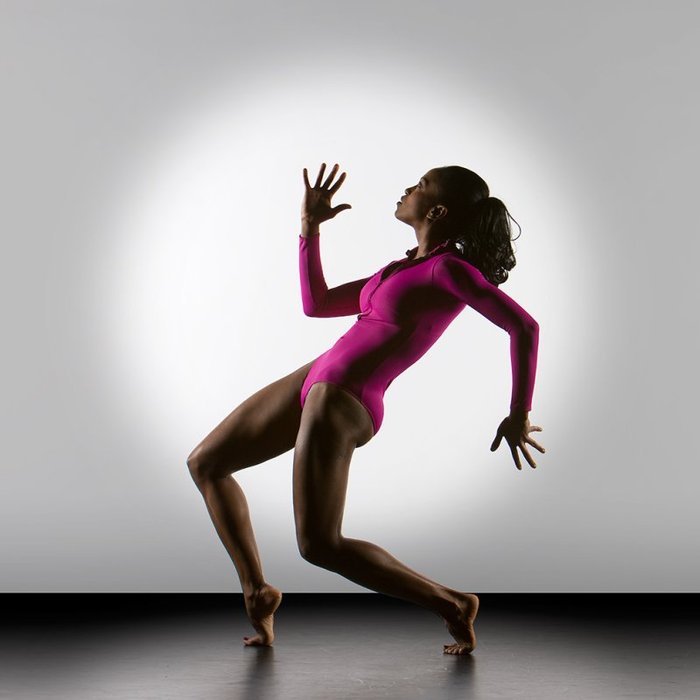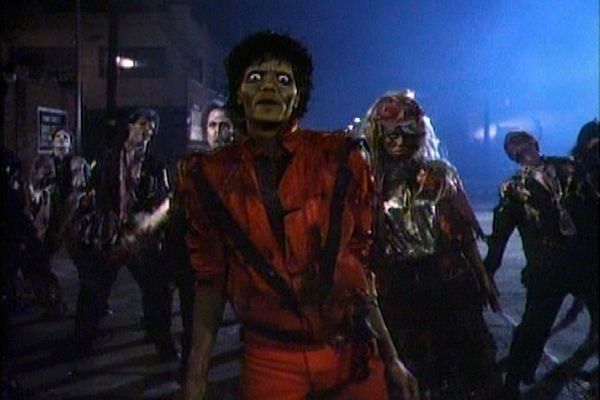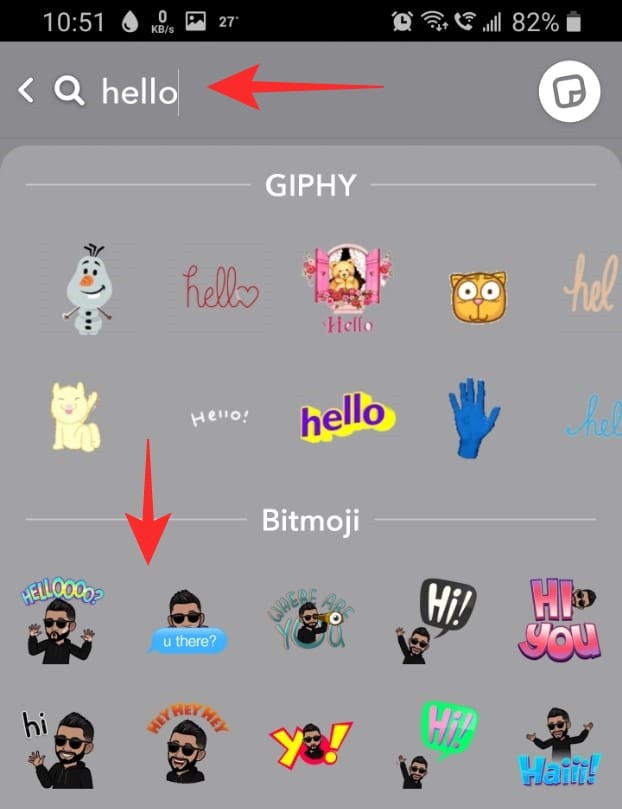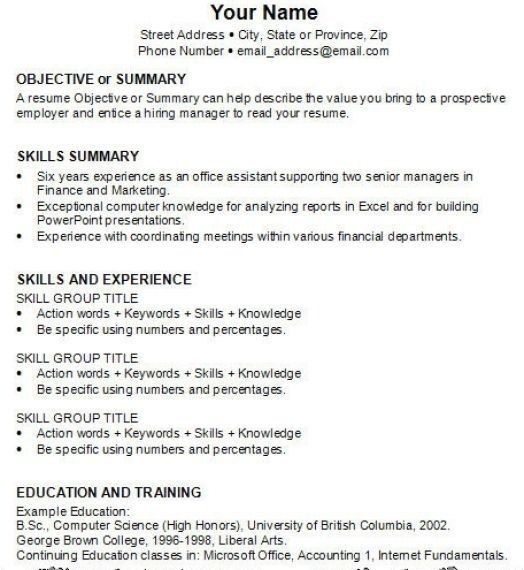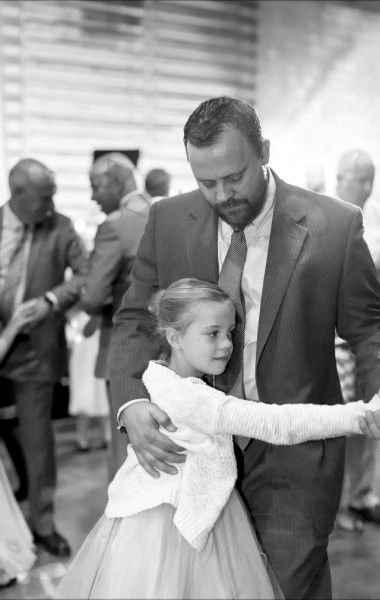How to get legs like a dancer
6 Moves for Great Dancer Legs
Want to get a major case of leg envy? Just check out a dancer—they always have amazingly sexy stems. But believe it or not, they don't come from dancing alone. “Dancing is great exercise, but it's primarily cardio,” says Akua Noni Parker, a professional dancer and member of the Alvin Ailey American Dance Theater Company. Parker, who has been dancing since the age of three, has performed on stages around the world. Now, you can catch her (and her awesome legs) in action at New York City's Lincoln Center from June 12-16, where she’ll be performing in the acclaimed show Revelations, among others.
These six moves, which Parker does daily, will get your legs in show-off shape, too—even if you have two left feet. “These exercises hit major leg muscles like your quads, hamstrings, and calves—but also target your core and glutes and help with hip stabilization,” says Karen Joseph, a personal trainer and owner of Fountain of Fitness in Valrico, Florida. Pick a few of your faves and add them to any workout—or do all six exercises as one circuit two or three times a week.
Pelvic raises Lie down on your back with your knees bent, feet hip-width apart and resting flat on the floor. Then raise your hips so your body forms a straight line from your shoulders to your knees. Pause, then lower back to the starting position. Repeat slowly 30 times. Position your feet a few inches further away from your body and repeat.
Squats Stand with your feet shoulder-width apart, and lower your body a far as you can by pushing your hips back and bending your knees (while keeping your knees above your ankles). Pause, then push through your heels to return to start. Do 20 reps, then turn your toes out (as if you're doing a plie) and repeat.
Calf raises Hold onto a wall with your feet parallel, hip-width apart. Keep your knees straight and rise up onto your toes as high as you can. Pause, then slowly lower back to the floor.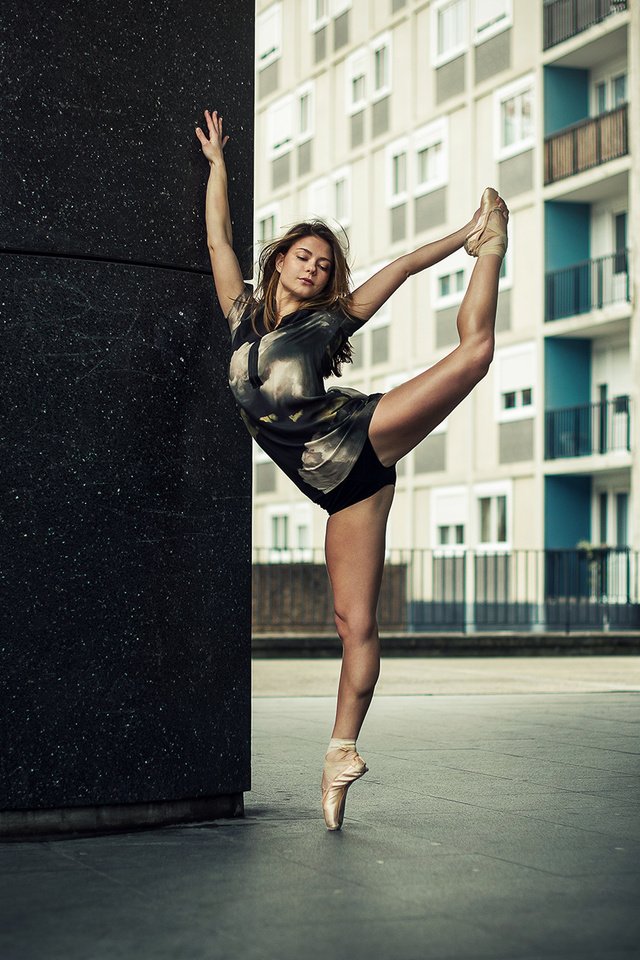 Do 15 reps, and then turn your toes out, heels together, and repeat.
Do 15 reps, and then turn your toes out, heels together, and repeat.
Clams Lie on your left side on the floor, with your hips and knees bent 45 degrees. Your right leg should be on top of your left leg, and your heels should be stacked together. Keeping your feet in contact with each other, raise your right knee as high as you can without moving your pelvis. Pause, then return to the starting position. Don't allow your left leg to move off of the floor.
Single-leg lift Get on your hands and knees and raise one leg off the ground so it’s in line with your body. Your back should be flat, core tight, foot flexed (imagine you’re trying to reach your heel toward the wall behind you). This is the starting position. Keeping your leg straight and, without arching your back, squeeze your glute and raise your leg a few inches toward the ceiling. Pause, then lower back to the starting position. Do 10, then repeat on the other side.
Fire hydrant in-out Start on your hands and knees, then raise your right knee off the ground and bring it toward your chest, keeping your back flat.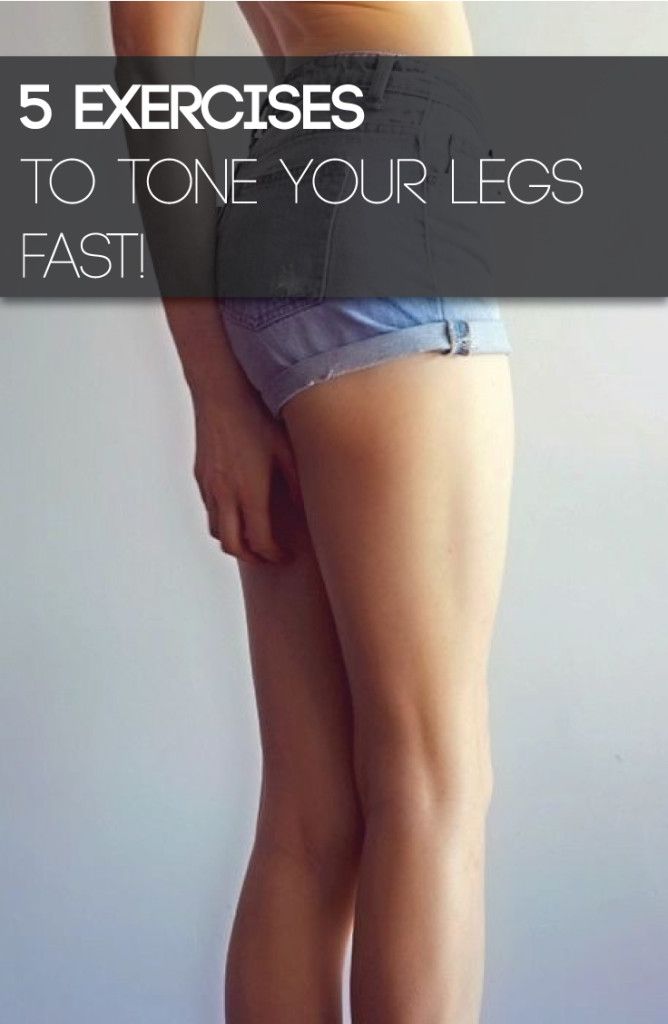 Keeping your right knee bent, raise your thigh out to the side without moving your hips. Slowly lower back to start. Do 10, then repeat on the other side.
Keeping your right knee bent, raise your thigh out to the side without moving your hips. Slowly lower back to start. Do 10, then repeat on the other side.
photo: Alvin Ailey American Dance Theater Company
More From Women's Health:
Get Into the Groove: The Benefits of Dance
Get Sexy Summer-Ready Legs Like J.Lo
Get Lean Legs
10 Moves to Give You a Toned Physique Like a Ballet Dancer
JOVELL RENNIE / Stocksy
Ballerinas have a way of carrying themselves with grace, strength, and confidence. Their training not only teaches them poise but also works their bodies in a way that creates long and lean muscles. You, too, can train like a ballerina (minus the bruised toes and fierce competition) with these ballet exercises that will sculpt and strengthen your entire body. “It’s a method of movement that allows you to connect to the body, to sculpt a feminine physique, to balance posture, and to burn calories without heavy impact,” says Christine Bullock, former ballerina, and creator of Evolution 20.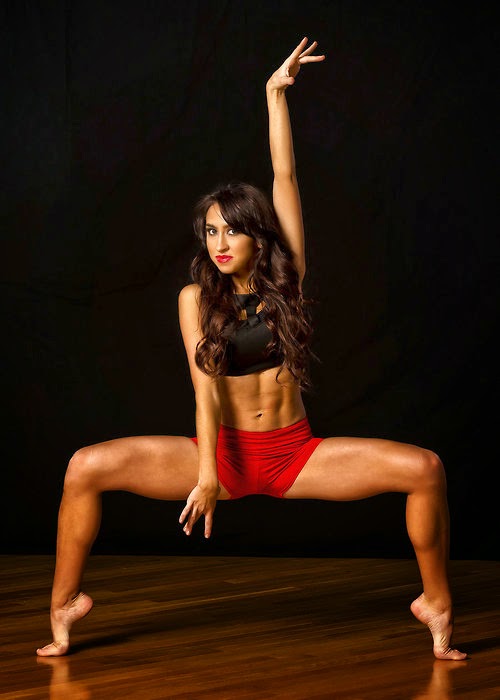.jpg)
Ballet dancer and director of the Steezy Studio Brittany Cavaco agrees, adding that ballet gives you strength, flexibility, coordination, endurance, and lots of energy. “I find that even doing just 20 minutes of a ballet barre or ballet toning class gives me a lot of mental clarity,” she says. “The repetition of the movements, along with the artistry, allows you to do a full-body workout without even realizing it.”
Ready to get started? Here are 10 total-body exercises to get you a toned physique like a ballet dancer’s.
Meet the Expert
- Brittany Cavaco is a professional ballet dancer and the director of the Steezy Studio ballet program. Her career highlights include dancing with companies such as the Washington Ballet, Los Angeles Ballet, and English National Ballet.
- Christine Bullock is a former ballerina, a fitness expert, and the creator of the Evolution 20, Super Shred, and Body Reborn fitness series, as well as the co-creator of Kayo Body Care.
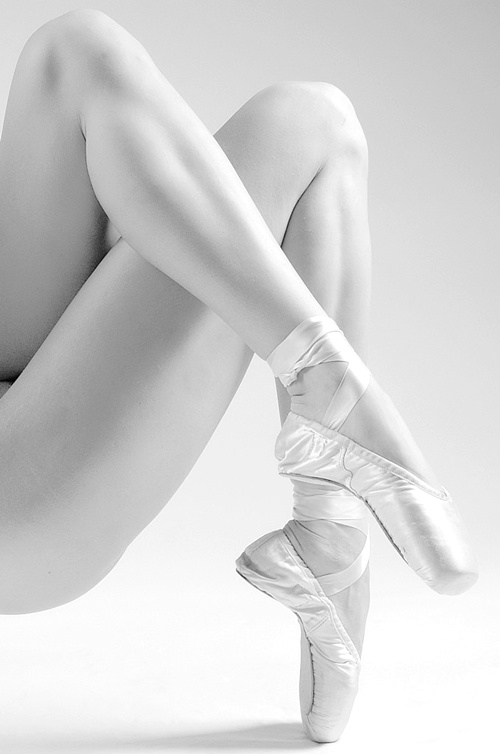 She is certified in yoga, Pilates, postnatal fitness, and nutritional counseling.
She is certified in yoga, Pilates, postnatal fitness, and nutritional counseling.
Safety and Precautions
These ballet exercises are low-impact, so they are easy on your joints and also strengthen your muscles to prevent injury. “These ballet-inspired toning moves are very inclusive,” says Cavaco. Even so, it is important to check in with your doctor before starting a new exercise program, especially if you have existing health conditions such as heart disease, diabetes, or high blood pressure.
Start slowly with any exercise program, stopping if you have any pain, and work your way up in intensity and duration. If you have prior injuries or conditions like arthritis, Cavaco recommends listening to your body and stopping if you have any discomfort. “I would suggest that people with arthritis take the pliés very slow and don’t go as deep down.”
One of the benefits of ballet toning and ballet barre exercises is that they can help prevent future injuries.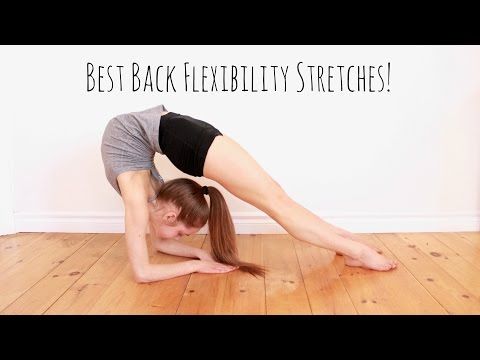 “Even if you love heavy weights or HIIT workouts, it’s beneficial to your body and goals to add barre,” says Bullock. “This type of workout can build the small muscles around joints to protect from injury. It incorporates mobility and flexibility to balance posture and sculpt longer musculature, and it still blasts calories.”
“Even if you love heavy weights or HIIT workouts, it’s beneficial to your body and goals to add barre,” says Bullock. “This type of workout can build the small muscles around joints to protect from injury. It incorporates mobility and flexibility to balance posture and sculpt longer musculature, and it still blasts calories.”
01 of 10
Plié in First Position
Steezy Studio
Plié means “to bend,” and it is the best exercise for your glutes and legs. “This traditional ballet exercise is the first step we do in every ballet class, and it is the bread and butter of all ballet moves,” says Cavaco. There are two types of pliés: a demi plié (meaning small or half) and a grand plié (meaning big or full). She recommends doing each type of plié in this exercise sequence.
- Start with a demi plié in first position. Your heels should be touching and your toes pointed outward.
- Your legs will be straight to start, glutes engaged, and pelvis slightly tucked.
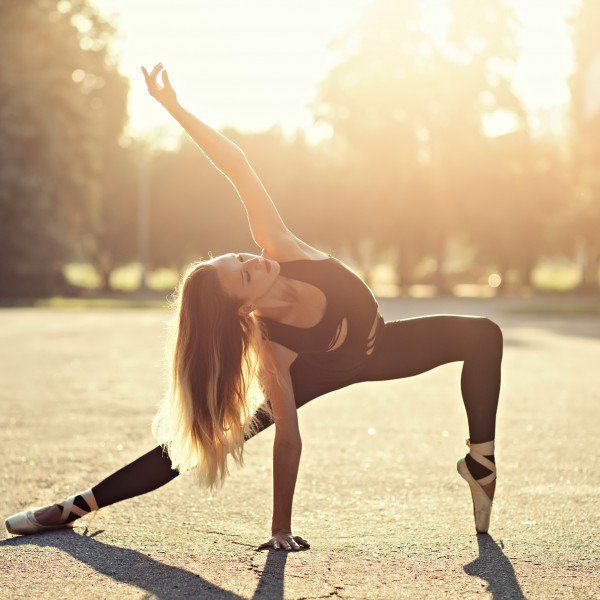
- Bend your knees, going down about halfway, with your heels still on the floor.
- You will create a diamond shape with your legs. This is your demi plié.
- To do a grand plié, just continue all the way down until your glutes are hovering over your heels.
- In between each plié, come back up to straight legs.
- Perform three demi pliés followed by one grand plié. Repeat this sequence for three to five sets.
“Try to keep your pelvis and glutes under you. It’s tempting to let them go back like a squat, but try to avoid that if possible,” says Cavaco. “Also, make sure to have your knees go over your first and second toes in each plié to avoid any knee discomfort.”
02 of 10
Plié in Second Position
Steezy Studio
This is the same exercise as the first position plié, however, you will be standing in what ballerinas call the second position. You will also perform both the demi plié and the grand plié (pictured above) in this sequence.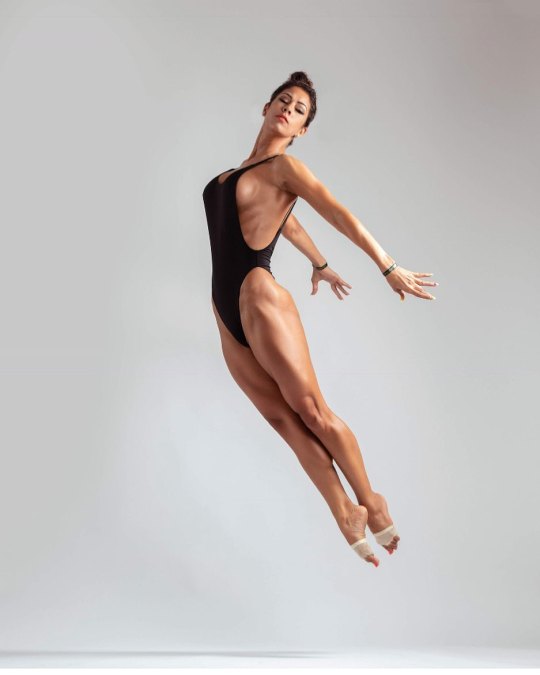
- Stand in second position, with your feet hip-distance apart and your toes turned out.
- Perform the demi plié, in which you go halfway down.
- Return to standing.
- To perform the grand plié, bring your pelvis in line with your knees. Your heels should stay on the ground.
- Perform three demi pliés followed by one grand plié. Repeat this sequence for three to five sets.
03 of 10
Jeté
Steezy Studio
“This will ignite your inner thighs,” says Cavaco, who explains that “jeté” means “to throw.”
- Start in fifth position, with both feet turned out and one in front of the other. Your front foot’s heel should touch the back foot’s toe.
- Your outside leg will go out to the side at 45 degrees and then close in fifth position, with this leg in the back instead of the front.
- Continue doing this movement, alternating front and back.
- Repeat on the other leg.
- Do as many repetitions as you can for one minute.
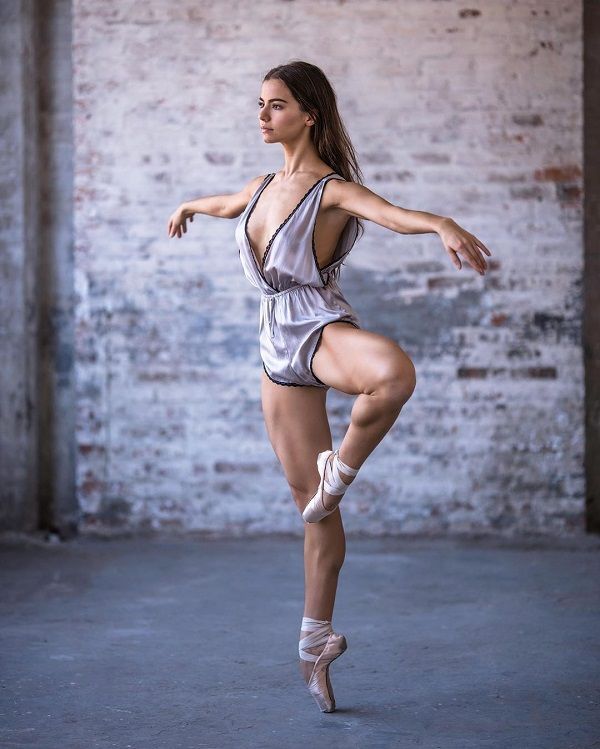
“Make sure that both legs stay as straight as possible the entire time,” says Cavaco.
04 of 10
Leg Circles
Steezy Studio
This exercise strengthens and sculpts your abdominal muscles. The bigger the circle, the more challenging it will be!
- Sit tall on your sitz bones (the bony part of your pelvis), and lean back onto your hands behind you.
- Bring your legs up to tabletop and have them glued together.
- Circle your legs around, starting to the right.
- Do this 15 times, then repeat to the left.
05 of 10
Bridging
Steezy Studio
Bridging helps lift and strengthen your bum as it works your gluteus muscles, hamstrings, and even your core.
- Lay on the ground, with your head facing toward the ceiling.
- Place your feet hip-distance apart, with your knees pointing to the ceiling.
- Engage your lower abdominals, and start the movement by tucking your pelvis.
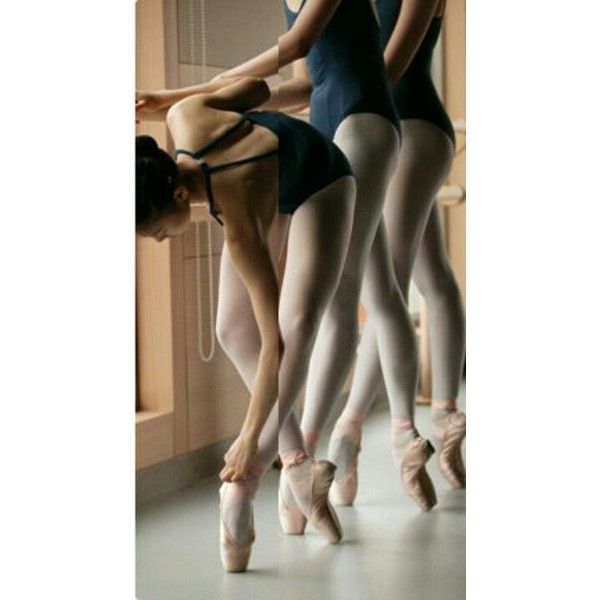
- Slowly roll up into a high bridge, lifting each vertebra in your back one by one.
- When you reach the top, hold for a moment, and slowly reverse down. Make sure that your hips are even throughout the exercise.
- Perform 20–40 reps.
06 of 10
Standing Obliques
Steezy Studio
This exercise tones and sculpts your oblique muscles, which are your side abdominal muscles. “Try not to let momentum take you up, and instead let it be driven by your muscles,” says Cavaco.
- Stand up, feet hip-distance apart. Make sure your shoulders, hips, and feet are all in the same line.
- Put your hands over your head.
- Lean to the right, and use your left oblique to slowly bring yourself back up.
- Repeat 20–30 times on each side.
07 of 10
Ballet Arms
Steezy Studio
You know how ballerinas have such beautiful arms? It is partly due to this move, which also strengthens your shoulder and back muscles.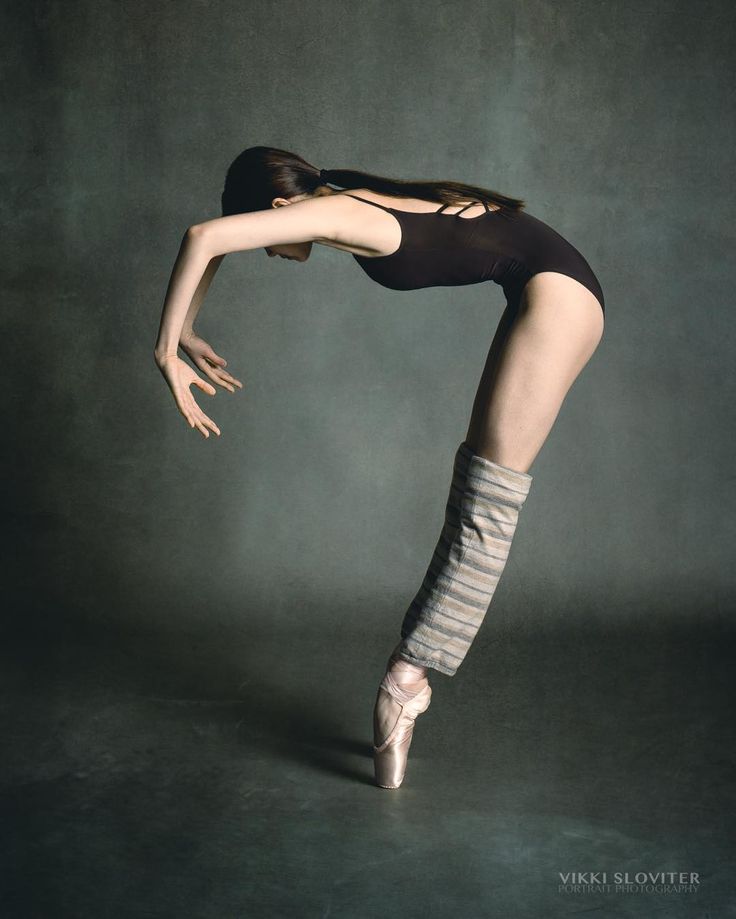
- Standing hip-distance apart, open your arms to your sides. Make sure your elbows are lifted and your forearms are curved in slightly.
- Using your lats and back muscles, bring your arms together in front of you. Imagine that you are hugging a tree.
- Reverse your arms back out.
- Make sure not to let your elbows drop and to keep your arms at shoulder height throughout the entire exercise.
- Repeat this move for 30 seconds to one minute.
08 of 10
Plank With Hip Dips
Steezy Studio
This exercise strengthens and tones your midsection, giving you that lean and graceful look of a ballerina.
- Start in a plank position, with your hands directly under your shoulders.
- Try to keep your body as long and straight as possible, from your head to your toes. Make sure your bottom isn’t sticking up.
- Engage your lower abdominals, and shift your hips to one side. Come back to the middle, and then shift them to the other side.
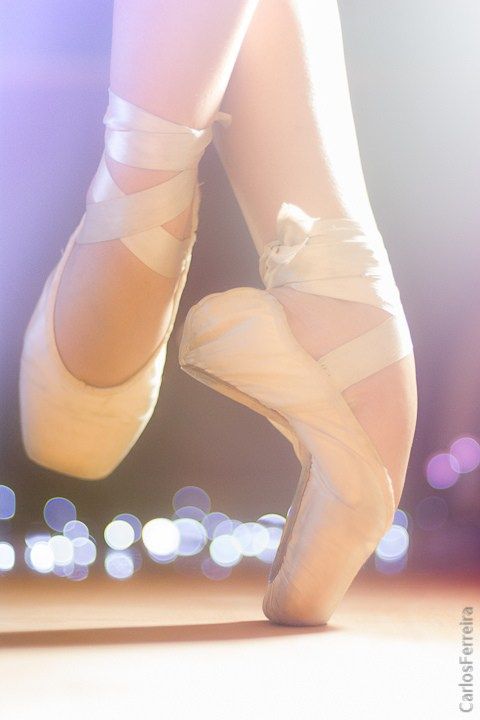
- Lift your shoulders up and out throughout the entire exercise.
- Repeat 15 hip dips on each side.
09 of 10
Inner-Thigh Lifts
Steezy Studio
This thigh-lift exercise will strengthen and tone your inner-thigh muscles for strong and sculpted dancer’s legs.
- Lie down on your side, and take your top leg and bring it over onto the floor in front of you.
- Flex your bottom foot, lift it up about seven inches, and then lower it back down.
- Lift it high enough so you are feeling your muscle work. If you aren’t feeling it, you aren’t lifting your leg high enough.
- Perform 30–40 reps on each side.
10 of 10
The Swan
Steezy Studio
“The goal here is to look like a beautiful swan,” says Cavaco. “Let your arms be engaged, but not stiff.”
- Stand hip-distance apart, with your hands by your hips.
- Let your elbows lead your arms as they travel up above your head and then come back down.

- Make sure not to let your shoulders creep up toward your ears, and avoid any tension in your head, neck, or chest.
- Repeat this move for 30 seconds to one minute.
10 Best Lightweight Arm Exercises for Sculpted Muscles
Article Sources
Byrdie takes every opportunity to use high-quality sources, including peer-reviewed studies, to support the facts within our articles. Read our editorial guidelines to learn more about how we keep our content accurate, reliable and trustworthy.
American Academy of Orthopedic Surgeons. Safe exercise. Updated February 2018.
4 steps to perfect dancer's legs
- Dec 16, 2014
- DANCE-mania, Blog, Video, Health, Exercise
Dancer's feet. They are not just long and thin. They are strong. They are flexible. And they do not appear easily by themselves.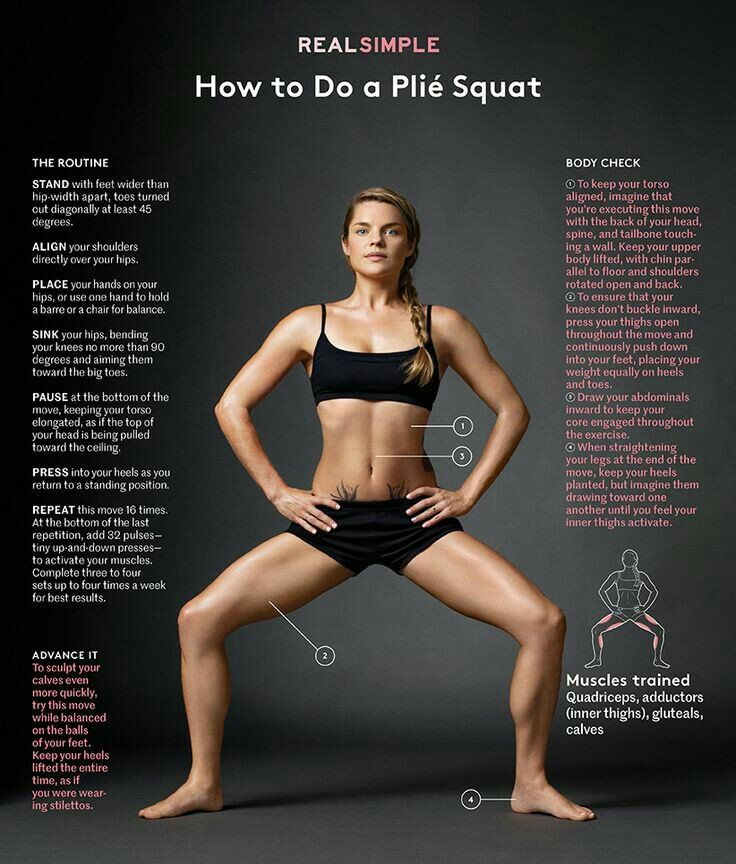
This article contains four basic exercises that work your legs from top to bottom, with which you can achieve the perfect dancer's legs.
Trust the experts!
1. Glutes and Hamstrings - Marching leg raises, leaning on the ball.
Strong buttocks not only allow you to move faster and more vigorously, but also help prevent injuries to your knees and lower back.
Lie on your back face up with your knees bent and your feet on a large ball. Raise your hips so that your body forms a straight line from your shoulders to your knees (A). Raise one knee to your chest (B). Then lower back, lift the other knee. Continue the exercise by changing legs.
2. Inner thigh - squats (Standing Plié Squat).
The muscles of the inner thigh, like all other muscles of the upper leg, help stabilize the knee joint. And when it comes to turnout, many dancers try to work from the knee. Strong inner thigh muscles will help you turn your legs exactly where you want them to.
Begin the plie exercise in wide second position, hands in second position with palms up.
Corn the buttocks and muscles of the inner surface of the thigh, getting up and raising your hands over your head.
Return to starting position and do 3 sets of 10 reps at a fast pace.
Let's make it harder! At the end of each rep, hold the plié and do 20 small up and down pulsating movements.
For maximum effect, stay in plie and pulse forward with 20 knees.
For advanced ones: at the end of each series, rub the heel from the floor and squeeze the hip muscles, go up to half -fans and linger in 10 accounts.
During the exercise, make sure that the muscles of the lower body are involved and that the hips are always kept directly under the shoulders.
For some, this exercise is old hat, but for us it is a classic. The toe raise strengthens both parts of the calf - the calf (the one you usually see on the back of the leg below the knee) and the soleus (which is under it). The next time you're balancing on your toes in a dance studio and trying to reach something on the top shelf, thank your strong calves.
A. Stand next to a chair with your heels together and toes apart. Place your right hand on the back of a chair, your left hand on your belt.
B. Slowly rise up on your toes. Hold at the top for a few seconds, then lower your heels. Repeat 10-15 times.
Be sure to stretch after strengthening exercises!
And finally, inspiring photos of beautiful dancing legs!
Share:
Dive into the depths of dance.
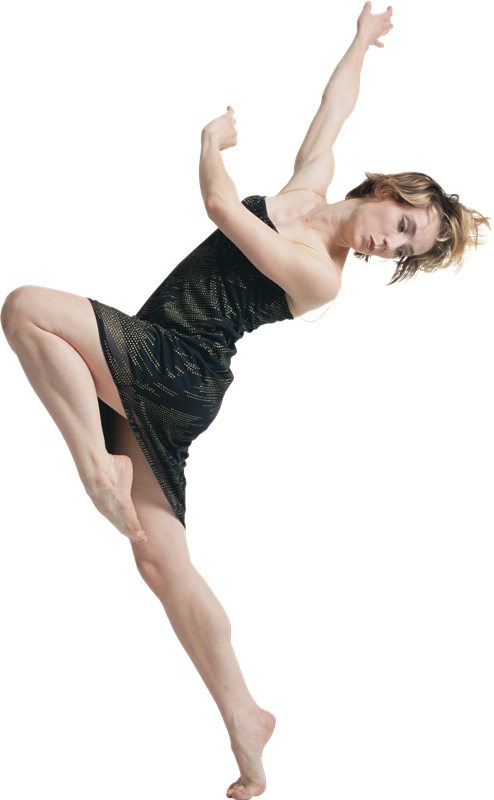 Muscles: zoukability — LiveJournal Author: Murasheva Nadezhda
Muscles: zoukability — LiveJournal Author: Murasheva Nadezhda Friends, I am starting a block of articles about the "underwater" part of the dance. We will explore the topic in more depth, how to learn to move beautifully and plastically and hear your partner. If you don't go to some third-party classes and master classes outside of social dances, then these topics are almost not covered in the lessons. In good classes, the correct work of the muscles is sorted out, but this still does not add up to a comprehensive picture.
In one of my previous articles, I likened dance to a big iceberg, the main part of which is hidden under water and opens up to us as we deepen into the knowledge of dance, movement, and our body. When a non-dancing person looks at the dance from the side, he sees the tip of the iceberg - its external manifestation. A beginner dancer continues to see only this top for a long time (and sometimes it ends with this), because the dance for him still remains a set of movements - an external form.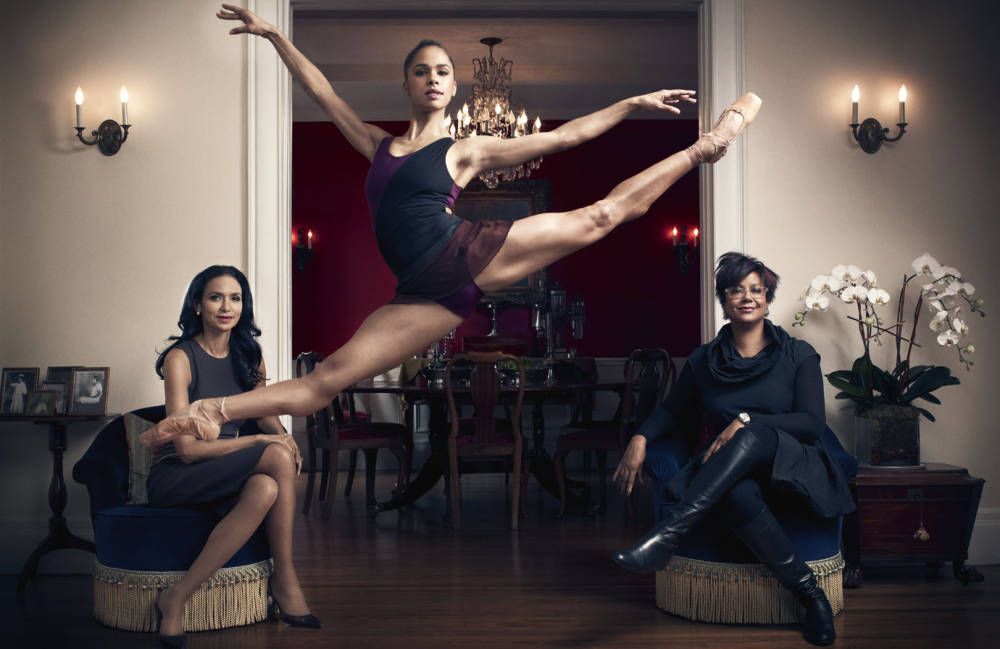 Even if these are movements from an advanced lesson. Beautiful, cool, complex, spectacular. "I want that too." Growing dancers begin to master all these complex movements, go into narcissism and show off through figures. When I look at dancers at parties it's 90% of the time I see exactly this - chasing the outer form. Sometimes tops dance like that. Dancers think in figures. But this is only the surface ABOVE the water! All the most interesting is deeper.
Even if these are movements from an advanced lesson. Beautiful, cool, complex, spectacular. "I want that too." Growing dancers begin to master all these complex movements, go into narcissism and show off through figures. When I look at dancers at parties it's 90% of the time I see exactly this - chasing the outer form. Sometimes tops dance like that. Dancers think in figures. But this is only the surface ABOVE the water! All the most interesting is deeper.
And what is there, in the depths, "under water"?
- The world of connection with a partner. What does it depend on? From connecting with yourself. How to feel a partner if you don't feel your own body?..
- Control of your body: muscle tone, ability to relax, control of your body structure, general feeling and awareness of your body.
- Feeling and awareness of oneself as a whole. After all, our body and consciousness are interconnected, and the state of one is reflected in the state of the other.
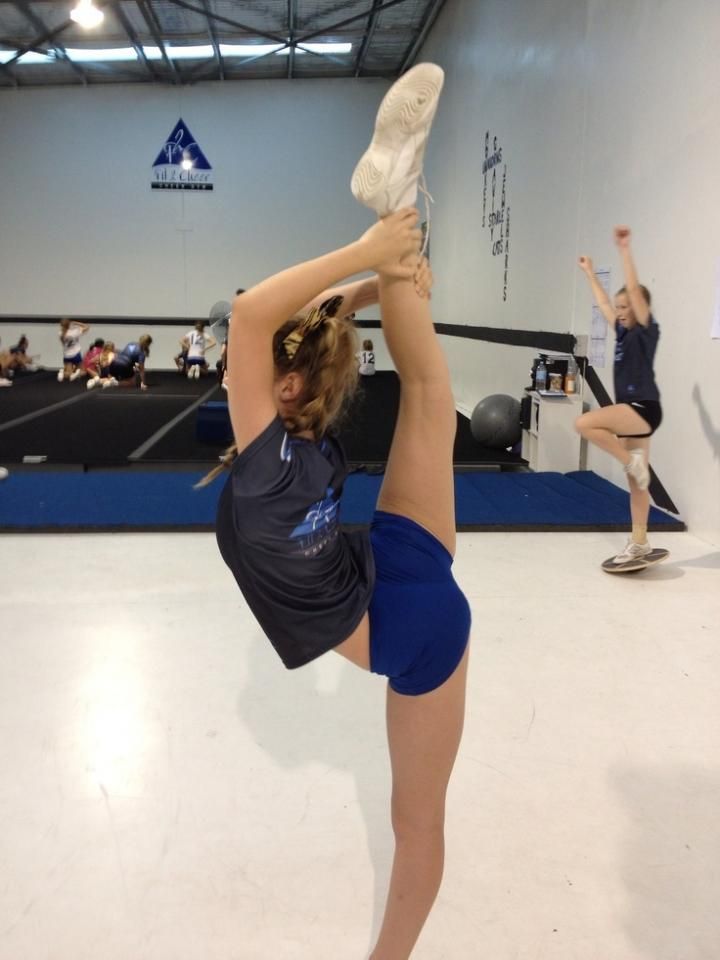 By acting on one, we have an effect on the other, and vice versa. Both in a positive and negative way. What a person has inside is how he moves.
By acting on one, we have an effect on the other, and vice versa. Both in a positive and negative way. What a person has inside is how he moves.
So, today we will begin to consider the level closest to the surface of the iceberg - muscle control . It is also the easiest to understand and use. When you better understand what muscles are performing movements, what to follow, your movements will become clearer, cleaner, more conscious.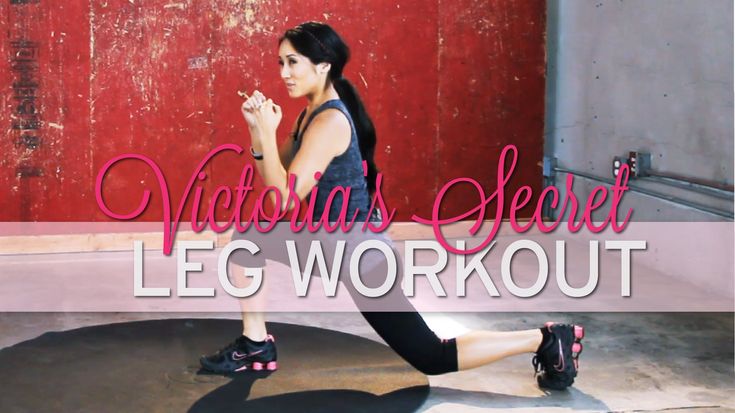 The movements that you learned by visually copying after the teacher will become clear from the inside: what works, why it works and what you need to make it even better.
The movements that you learned by visually copying after the teacher will become clear from the inside: what works, why it works and what you need to make it even better.
Why is this level closest to the surface? Because muscle ownership determines how your movements will look (but not only from this), because your balance, rotations, cambrai and much more depend on muscle tone.
And it is the simplest because it is much easier to pump up muscles than to learn isolation, relaxation and finer sensations. Muscle training is just a physical activity, albeit hard sometimes. Any dancer can pump up the press, which, however, will not teach him plasticity and connection with a partner.
Muscles not only help us perform movements correctly and beautifully, but also protect us from injuries, which is why it is so important to develop our physical form.
One of my favorite themes is that if you just go to the gym and pump something there, it doesn't help you dance properly at all.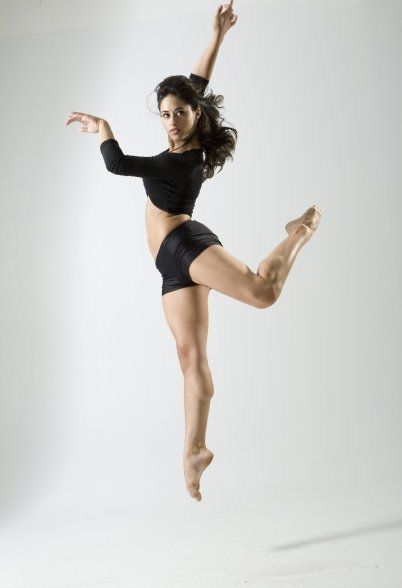 In addition to having a pumped up muscle, you must learn how to use it in dance movements, keep it in good shape on the machine, without flying out of your attention from the dance and connection, otherwise your work in the gym is useless. This is a characteristic feature of the dance. In the gym, we learn to tense our muscles strongly and relax 10-50 times. We leave the room and forget about them.
In addition to having a pumped up muscle, you must learn how to use it in dance movements, keep it in good shape on the machine, without flying out of your attention from the dance and connection, otherwise your work in the gym is useless. This is a characteristic feature of the dance. In the gym, we learn to tense our muscles strongly and relax 10-50 times. We leave the room and forget about them.
In dancing, you need to constantly keep in good shape and control many different muscles at once. This is a lot less tension than in the gym, but getting used to this state of constant soft tone can be very difficult. The dancer must have good control over his entire body in dynamics and statics, must be able to control tension and relaxation (stability and plasticity), feel his individual muscles (isolation), must have acquired the skill of holding passive attention at several points at once (back, abs, feet as minimum), which should not distract from the dance itself, connection, music and the surrounding space.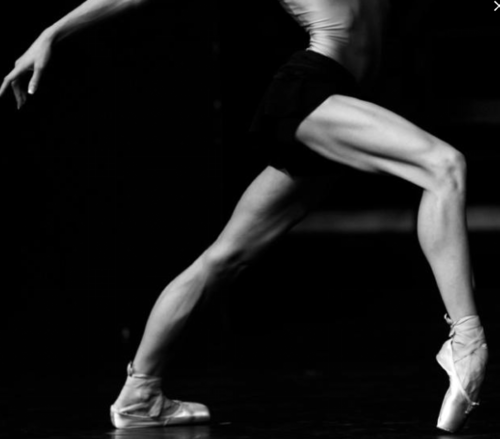.png)
Note: The article does not take into account physical limitations due to injuries, hernia, protrusions, etc.
PRESS
Upper, lower and oblique muscles of the abdomen.
From an anatomical point of view, the abdominal muscles give stability to our spine (in fact, this is somewhere around 50% of success). - Balance, rotation, stability, yes, yes
Using the press greatly reduces the load on the back when bending and tilting, it helps to build the axis on rotations. And therefore, a non-working press creates an overload of the lower back and other parts of the spine, which is fraught with muscle and nerve clamps, displacement of the spinal discs, hernia and chronic back pain, especially among zuckers. And with a broken press, you will be chatting on all rotations.
The oblique muscles of the abdomen give us plasticity, beautiful tilts to the sides, light soft work of the body in a circle and, of course, additional stability in difficult positions of the body.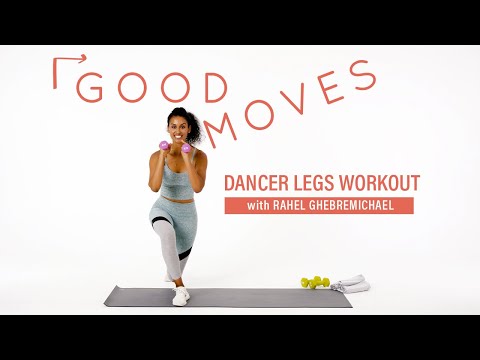
If we talk about the zouk, then we actively use the press in all movements with body inclinations (cambrai, headworks, bones, etc.), on rotations, on counterbalances. Wherever we need stability, a strong body, a straight back (in particular, the lower back). The press is collected on all supports and "falls" on a plank-type partner so that the body does not fall through. Sometimes, for even greater stability and inclusion of the press, you need to twist the pelvis forward even more (a la Michael Jackson) to fix the body even more strongly. I use it on cambra preps, bone necks, long spins. But you need to understand that the press does not tense up in the dance with an impenetrable shield as before the opponent's blow (then the dance would be too hard and exhausting). The work of the press is rather similar to what happens in Pilates: the navel is pulled up to the spine and remains there in a passive tone always. If necessary, the lower or upper press is additionally strengthened.
Interestingly, in zouk, a number of common movements require isolated possession of the upper and lower press. So, for example, when working with the chest (headworks, etc.), we weaken the upper press, but firmly hold the lower one - for stability, balance, so as not to fall apart.
Alas, even with trained abs, many dancers don't use them. They make movements with a relaxed stomach, which is why they fall apart, lose structure in the body. Using the abdominal muscles should be a habit. Spent, automatic. However, like all other muscles, which will be discussed further. In order not to think every time about all the muscles that need to be included.
You can often see dancers in a position of constant arching in the lower back even just standing still. This is an indicator that they do not use the press at all;) In the position of the lumbar deflection, it is possible to draw in the stomach a little, but it is impossible to fully use the press. Which is logical, because when in one place there is contraction, tension (in the lower back), then on the other side there is stretching and relaxation.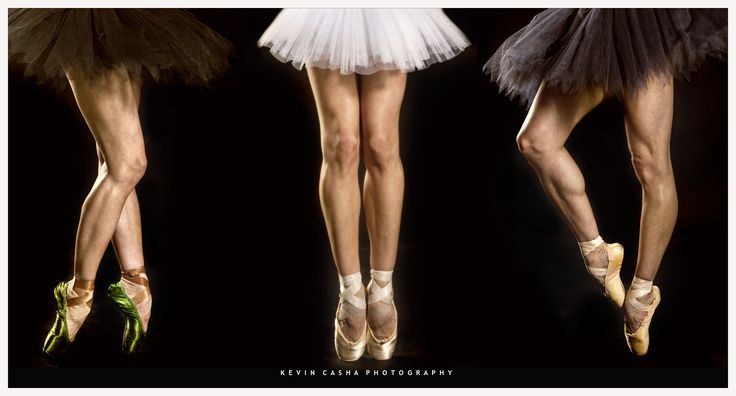
Another common mistake is the constant deflection under the shoulder blades, which is what they say "remove the ribs" in ballet lessons. This is a deflection above the waist, which means that in this case the upper press does not turn on and, as a rule, the back muscles in the thoracic region and sometimes between the shoulder blades are strongly clamped. It is very difficult to get rid of this habit. Usually combined with a lumbar deflection. Ribs stick out in front, buttocks in the back, and somewhere in the middle in a bend, a poor, clamped spine.
Basicly everyone knows how to pump the upper and lower press. There are a lot of options. I will only add that, firstly, you should not put your hands on your neck and try to lift yourself with a jerk of your arms or head - this is technically incorrect and dangerous, hypertension is created in the neck, and in fact you lift yourself with your neck, not with a press. It is better to keep your hands on your chest or on your stomach. If the press is weak, then it will be more difficult, yes. But now you do not deceive yourself. And secondly, if you swing the lower press by raising your legs, then there should be no deflection in the lower back. If the lower back sags, it means that you do not have enough strength and abs and back, and instead of the lower press, you again overload your back. Press your back completely to the floor and bend your knees - this will be better. And yet, given the peculiarities of the dance work of the muscles, it is better to do all exercises slowly. No need to chase the number of movements. Let them be only 10, but each stretched into 10 accounts, for example.
If the press is weak, then it will be more difficult, yes. But now you do not deceive yourself. And secondly, if you swing the lower press by raising your legs, then there should be no deflection in the lower back. If the lower back sags, it means that you do not have enough strength and abs and back, and instead of the lower press, you again overload your back. Press your back completely to the floor and bend your knees - this will be better. And yet, given the peculiarities of the dance work of the muscles, it is better to do all exercises slowly. No need to chase the number of movements. Let them be only 10, but each stretched into 10 accounts, for example.
The oblique abdominal muscles are trained with various twists and side bends. Twisting should be smooth, on the muscles, not jerky. Turns are carried out from the waist, the hips should not turn anywhere - this is important and a common mistake. So that the hips do not exactly spin, you can do twists while sitting on the priest (and at the same time keep a straight back).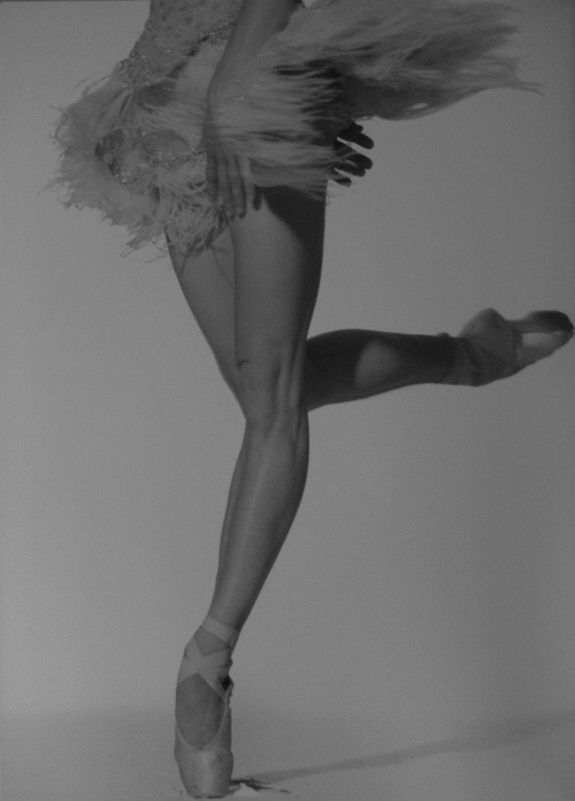 Still tilts to the sides - both fast (strength training) and slow (stretching, endurance). On tilts to the side, both of your shoulders should look into the mirror, and not at the floor - otherwise you train other muscles, and the obliques remain undeveloped. The chin on the side slopes also looks into the mirror, and not at the floor.
Still tilts to the sides - both fast (strength training) and slow (stretching, endurance). On tilts to the side, both of your shoulders should look into the mirror, and not at the floor - otherwise you train other muscles, and the obliques remain undeveloped. The chin on the side slopes also looks into the mirror, and not at the floor.
I would like to draw attention to the following points in the photo:
Look how straight she holds her neck. The head does not move forward and does not throw back. That's right, that's the way it should be.
This position can be made easier by bending your knees and rounding your back a little (the press still works, it will be easier). But the option in the photo with a straight back is more complicated and better because the back muscles will also work this way. And the legs extended at the knees are heavier, more difficult to hold them.
BUTTOCKS
There are quite a lot of gluteal muscles, and they will work differently depending on the movements.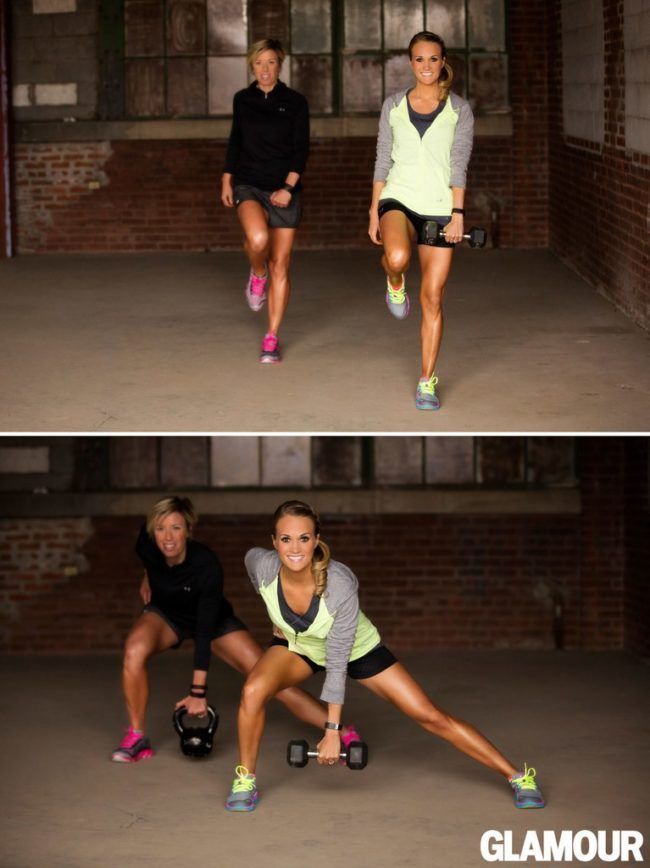 Therefore, the expression "swing ass" is somewhat abstract. But if you dance only social dances, then you should be primarily interested in the gluteus maximus muscle and the ability, if necessary, to keep (!) It in suspense during dance movements.
Therefore, the expression "swing ass" is somewhat abstract. But if you dance only social dances, then you should be primarily interested in the gluteus maximus muscle and the ability, if necessary, to keep (!) It in suspense during dance movements.
The effect of using the gluteus muscle is about the same as that of the press - stabilization of the core. Here it is only necessary to understand that the press directly stabilizes our top (spine), and the buttocks stabilize the pelvis, that is, the bottom (legs, hips, lower back). A retracted buttock limits the mobility and rotation of the hip joint, and the position of the hip joint affects the position of the lower back as well - everything is interconnected. By pulling your butt in, you limit the stride length available to you, this helps to fight drifts in the dance, especially on turns and spins.
What do you need to remember? The fact that if you pumped up a big beautiful ass in the gym, and in the dance she is always relaxed, then there is zero sense in her! Amen.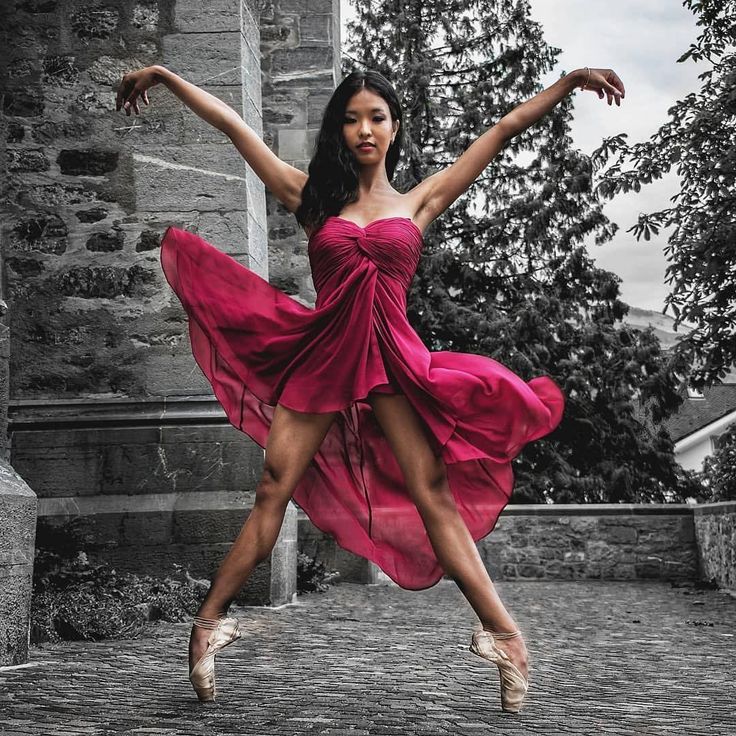
To dance, you just need to be able to pull it in strongly, "squeeze a coin" between the buttocks. Well, to maintain this position for a while - it's easier here than with the press.
Regular squats are not very suitable here, they just increase the volume of the buttocks and thighs. Much better are leg raises while lying on your stomach, and even better are real bodily tasks in dance: ballet exercises in which you always need to keep your butt. For example, ballet plies with toned buttocks, tandu and all other happiness. The bar is still very good, if done correctly, retract and twist the pelvis forward.
But this is the wrong plank! There should not be such a bend in the lower back, the pelvis needs to be scrolled forward more.
Correct bar . Compare body lines.
LONG BACK MUSCLES
In fact, this is a whole group of closely spaced muscles. It doesn't matter to us now.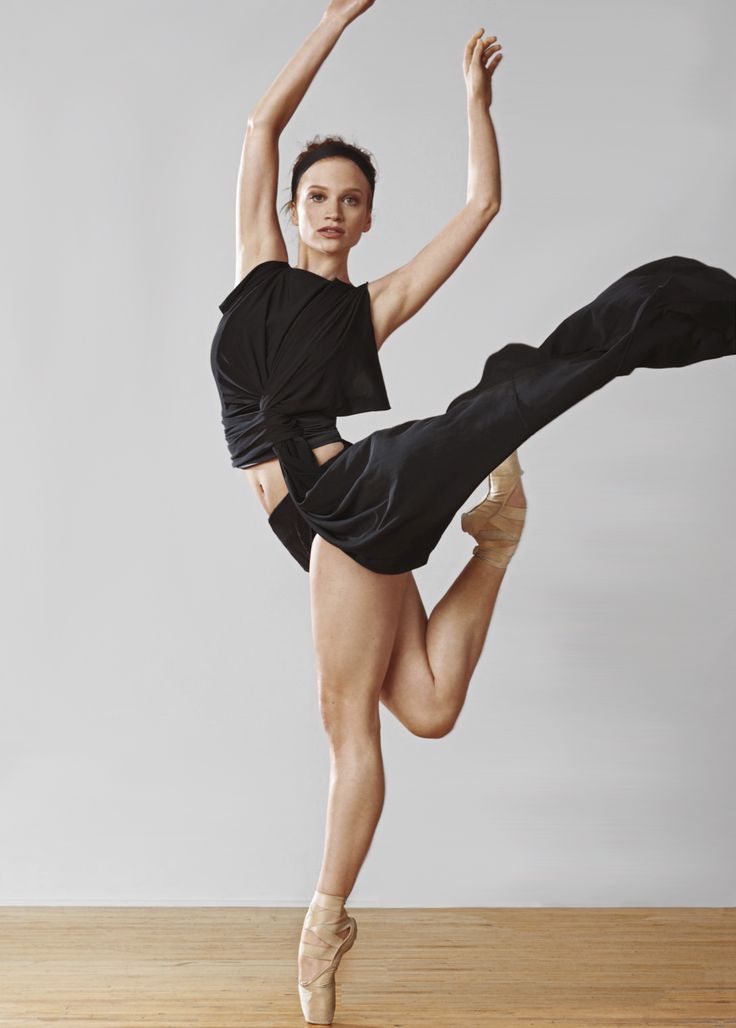 If you put your thumbs on your spine and step back a little, you will feel such powerful thick seals from the lower back and along the entire spine, passing into the muscles of the neck. It's them.
If you put your thumbs on your spine and step back a little, you will feel such powerful thick seals from the lower back and along the entire spine, passing into the muscles of the neck. It's them.
Muscles are potentially very strong and useful, and therefore sad if they are not working. You have no idea how much you are missing if you don't own them! And often they are non-working and at the same time they are still heavily clogged with incorrect operation of the case in principle. Then they have overstressed painful areas that you do not know how to control, you cannot relax them and strain them at will. Then it's even more difficult, but it's fixable.
The long back muscles pull the spine up and help keep it in a straight, straight position. Just as the abs keep the spine stable on one side, the long back muscles support it on the other side. When the teacher says "we stretch the top of the head up", then the activation of these particular muscles is meant. When you feel and control them, you feel a real physical upward pull.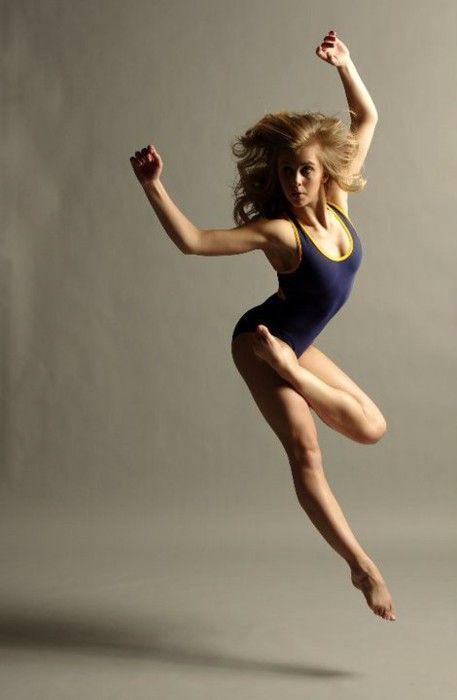 These same muscles keep the spine in good shape and when tilting the body, they also greatly affect your posture and body structure in the dance, the pattern of relaxation and tension, and this affects how absolutely all your movements look and feel.
These same muscles keep the spine in good shape and when tilting the body, they also greatly affect your posture and body structure in the dance, the pattern of relaxation and tension, and this affects how absolutely all your movements look and feel.
An ordinary unprepared person does not feel these muscles and does not understand what it means to reach up. "How to stretch, what?". Or maybe these muscles are even pumped up by boats, but it's still not clear how to reach up. This is fine. If you are working on yourself, then it is very important to learn how to master them. The technique of your rotations, centering, a smooth, stable exit from any rotations, without blockages, distortions, even with poor partner guidance, will depend on this, and in general your well-being and health will be better. When female partners fall heavily on their side in slopes and fall in turns - they do not work, there is nothing to build an axis with.
Learning to control the long back muscles is more difficult than mastering the abs or buttocks.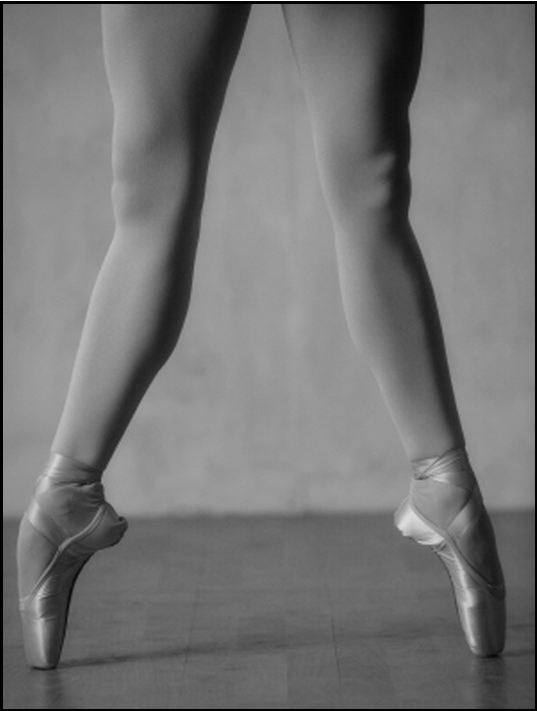 First you need to remove the interference of posture, which prevent these muscles from being included in the work. Namely, you need to tighten your stomach, remove the deflections in the lower back and under the shoulder blades, remove the ribs sticking out forward. If your ribs stick out, then you a priori cannot use your back muscles normally. They are chronically tight and shortened. Stand up to the wall and try to press against the wall with your whole back as much as possible, hold the position without the wall. And strive to press the lower back, even if it doesn’t work out completely.
First you need to remove the interference of posture, which prevent these muscles from being included in the work. Namely, you need to tighten your stomach, remove the deflections in the lower back and under the shoulder blades, remove the ribs sticking out forward. If your ribs stick out, then you a priori cannot use your back muscles normally. They are chronically tight and shortened. Stand up to the wall and try to press against the wall with your whole back as much as possible, hold the position without the wall. And strive to press the lower back, even if it doesn’t work out completely.
The strength of the long back muscles is well trained with boats and tilt-ups with a straight back, but this does not teach you to reach up. For training the stretch itself, I have not yet come across anything more effective than ballet exercises in the middle of the hall. When you balance on one foot without the support of the barre, your body finds this stretch on its own, it gives stability. That's exactly what happened to me, and pretty quickly.
That's exactly what happened to me, and pretty quickly.
NECK
I wrote an article about headwork rules. You need to know these rules!
Headworks are not done with the neck muscles. But the muscles of the neck must be in a passive tone so that the cervical vertebrae are safe, so that they are not subjected to sudden traumatic movements, are not clamped or overextended. The exercises are very simple: tilt the head up and down, turn left and right, tilt the ear to the shoulder. Exercises are best done slowly and with effort. It is also very useful to work with an isometric load: press your head through the resistance of your hands. All this at the same time is the prevention of cervical osteochondrosis, strengthens muscles and promotes the health of our cervical discs.
Typical mistakes of the zouk : throwing the head back, throwing the head back on a relaxed neck, headwork through the neck muscles, asymmetrical position of the head relative to the work of the body (the head falls forward or back and outweighs).
But besides this, there is a posture error that few people talk about, and it is inherent in many. This error is chin up. We know to reach up with the top of our head. That's just the muscles of the top of the head physically can not pull us up and have completely different functions. The crown is a purely visual landmark (just not everyone is aware). But we don’t even know where the top of our head is and how it should feel. And so we raise our chin and stretch our foreheads up. In this position, the front muscles of the neck stretch upward, and the back muscles, which should work, are compressed. This is exactly the opposite of what the teacher wants from you. In addition to the physiological harm to your neck, this also prevents you from dancing: the stable position of the head is disturbed, the head begins to outweigh and fills you back. This is especially problematic on spins.
It is better to correct the position of the head at the mirror and through the same exercises, carefully monitoring the position of the head.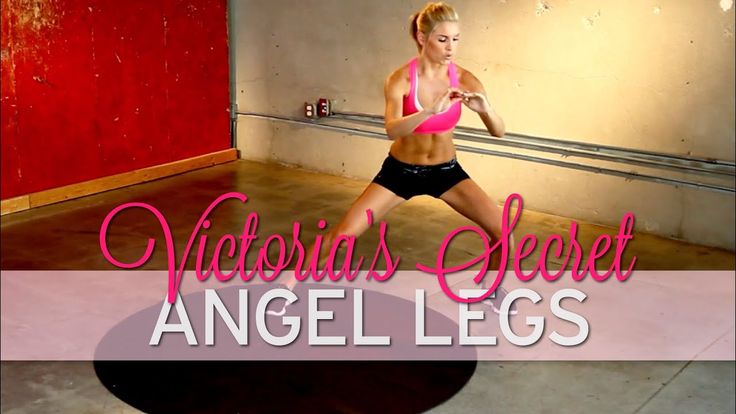 The simplest and most effective: put your hands on the back of your head. Feel for two bones at the base of the skull with your thumbs and grab them as well. Press your head on your hands and your hands on your head. Holding these bones and maintaining pressure, stretch your head with your hands a couple of centimeters up.
The simplest and most effective: put your hands on the back of your head. Feel for two bones at the base of the skull with your thumbs and grab them as well. Press your head on your hands and your hands on your head. Holding these bones and maintaining pressure, stretch your head with your hands a couple of centimeters up.
LOIN
Dancers! The lower back in the dance should be straight! (Well, almost straight, - for the most meticulous) No deflections just like that in every movement. Deflection is not styling! Chronic backbend is a lump of tension that you live with, and hit it even more in all amplitude movements. Then it can turn into a hernia of the lumbar and pinched nerve endings.
As I wrote above, you need to pump the lower press more, and activate the abdominal muscles to align the lower back and hip joint. In addition to this, it is very necessary to learn how to sit on the sitting bones with a flat back. This is generally a mandatory minimum for the normal posture of any non-dancing person.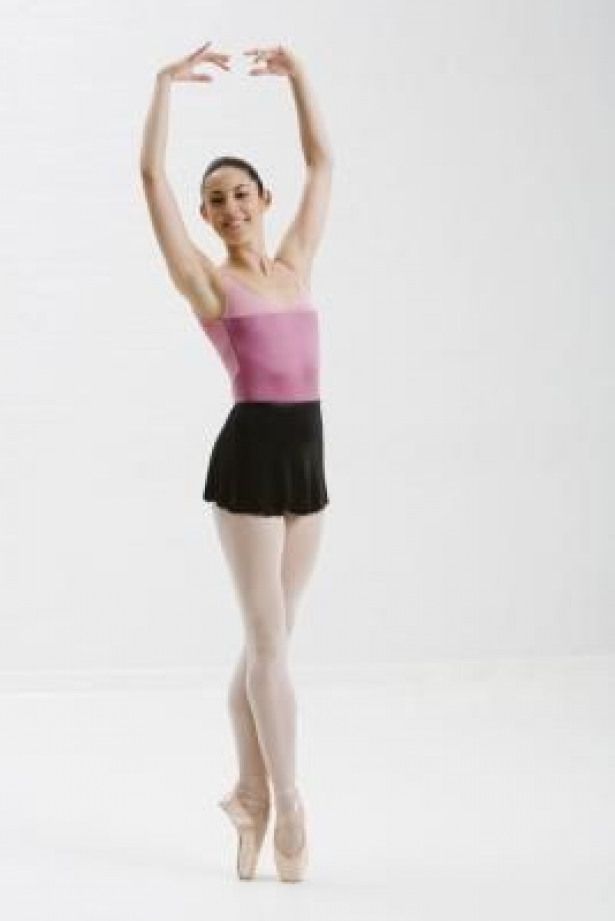 When you can just sit straight, then we go into the fold to the legs, be sure to stretch the lower back. It will be very gross. This is not a leg stretch, no need to dive head first. It is important to start folding towards the legs from the hip, trying to put the stomach and ribs on the legs. At the same time, you can stretch your arms forward, this helps to stretch yourself.
When you can just sit straight, then we go into the fold to the legs, be sure to stretch the lower back. It will be very gross. This is not a leg stretch, no need to dive head first. It is important to start folding towards the legs from the hip, trying to put the stomach and ribs on the legs. At the same time, you can stretch your arms forward, this helps to stretch yourself.
The muscles of the lower back are also trained in different inclinations with a straight back. Also, be sure to keep your lower back pressed to the floor in all pumping exercises when you are lying on your back. Especially when it comes to abdominal exercises. And standing against the wall, we press the lower back into the wall! Out of habit, it will seem that you are hunched over, but in fact, sleeping muscles just turn on, and your back becomes straighter. Try to maintain this position yourself by checking yourself in the mirror.
serratus anterior
Muscle that depresses the scapula. If your shoulders often rise, it means that she is not in good shape, and at the same time, the muscles of the neck and trapezium are probably clamped. If this muscle does not work, the female partners do not understand the lead well, and the partners do not know how to frame and twitch their arms a lot. If the serratus anterior muscle is not in good shape, then the shoulder and shoulder blade are not the connecting link between the body and arms. The body moves by itself, and the arms and shoulders move by themselves, without coordination with the body. Connection without anterior dentate is snotty and twitchy (because with hands).
If your shoulders often rise, it means that she is not in good shape, and at the same time, the muscles of the neck and trapezium are probably clamped. If this muscle does not work, the female partners do not understand the lead well, and the partners do not know how to frame and twitch their arms a lot. If the serratus anterior muscle is not in good shape, then the shoulder and shoulder blade are not the connecting link between the body and arms. The body moves by itself, and the arms and shoulders move by themselves, without coordination with the body. Connection without anterior dentate is snotty and twitchy (because with hands).
In the dance, you literally need to weld the shoulder blade to the ribs and leave it there forever. Difficult? Possibly)
You can come up with quite a few exercises to strengthen the anterior serratus. Mandatory condition: through "I can not" lower the shoulder blades. You can slowly raise and lower straight arms with a small weight, do rotations in the shoulder joint, you can stretch the elastic in different positions.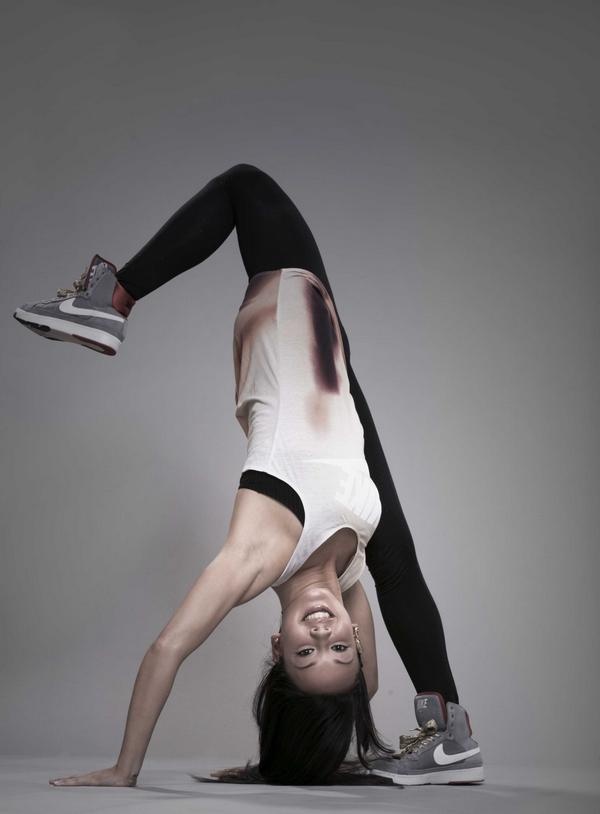 The slats also pump the front gear well, just do not forget to press the shoulder blades down. All sorts of positions are good with an emphasis on the floor with your hands (I want to relax my shoulder, and then it will climb into my ear).
The slats also pump the front gear well, just do not forget to press the shoulder blades down. All sorts of positions are good with an emphasis on the floor with your hands (I want to relax my shoulder, and then it will climb into my ear).
Rhomboid muscle
Muscle that brings the shoulder blades to the center. It affects the spread of the shoulders and the tone of the frame as well.
It is important that the muscle is in good shape, but not overstressed (!). Attempts to dance with the shoulder blades constantly gathered towards the center will kill all the plasticity in the thoracic region, and at the same time you will no longer feel the physical connection with the partner (where it is clamped, energy and subtle sensations do not pass there).
Actively activated by spreading the arms to the sides with the institution far behind the back, you can use weights, you can lie on your stomach. On your stomach, simply spread your straight arms to the sides and tear them off the floor as high as possible.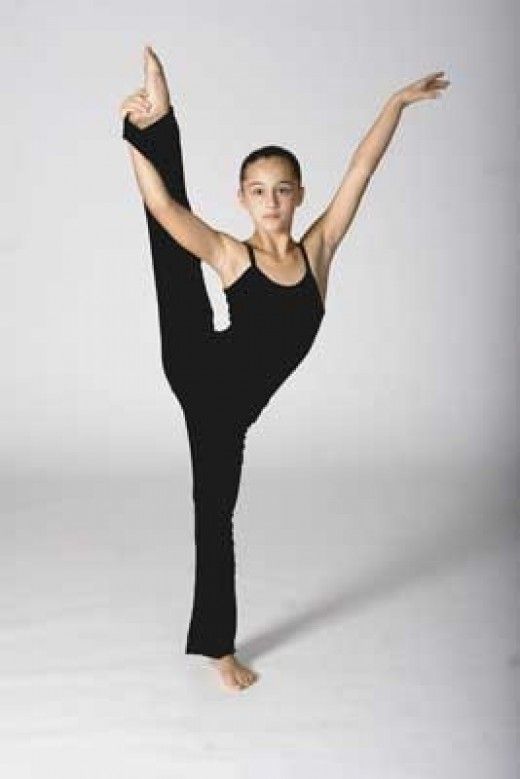 If you wish, you can find many more options on the Internet.
If you wish, you can find many more options on the Internet.
When training the rhomboid muscle, watch the ribs, do not bend in the chest. It can be difficult)
LEGS
The fact that any dancer needs strong, trained legs is obvious. And it would be strange to single out some individual muscles and say that they are the most necessary for social dances. All the muscles of the legs are somehow involved in performing various movements and maintaining balance. Everything is important here. Legs need to be trained in a complex and varied way. The health of your joints, especially your knees, depends on the condition of your legs (strength and stretching of the muscles). About them a little further.
It usually happens that dancers perform some kind of monotonous set of exercises that does not fully load their legs. This is not good, as you will be left with undeveloped areas, the weakness of which will affect the quality of your movements and may even negatively affect the condition of your joints.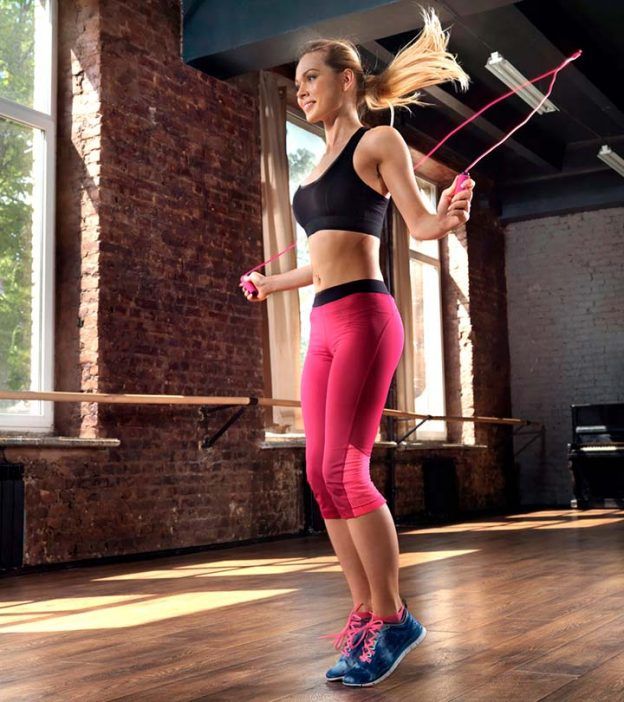 For example, the most common leg exercises (lunges, squats, swings, half-toes, etc. - the basic set) usually do not pump the inner thigh muscles in any way. Ballet exercises, on the contrary, perfectly pump the back muscle group and adductor muscles of the thigh, but load the muscles of the front and outer sides a little. Pilates works very complex with the muscles of the legs (and the whole body).
For example, the most common leg exercises (lunges, squats, swings, half-toes, etc. - the basic set) usually do not pump the inner thigh muscles in any way. Ballet exercises, on the contrary, perfectly pump the back muscle group and adductor muscles of the thigh, but load the muscles of the front and outer sides a little. Pilates works very complex with the muscles of the legs (and the whole body).
Conclusion: you need to train your legs in a complex way.
Do not ignore any "heavy" unusual exercises, because "in dance I don't need it." Use both the non-reversible position of the feet in the exercises (feet parallel) and the reversible position (heels together, toes apart, knee joint over the toes, between the thighs "clamped piece of paper"). Stand on your toes and on your heels. Remember that you need to evenly pump muscles and stretch. Pumped, unstretched legs are stiff, clogged, prone to accidental sprains. Poorly pumped, but well stretched - very weak, prone to joint injuries, dislocations.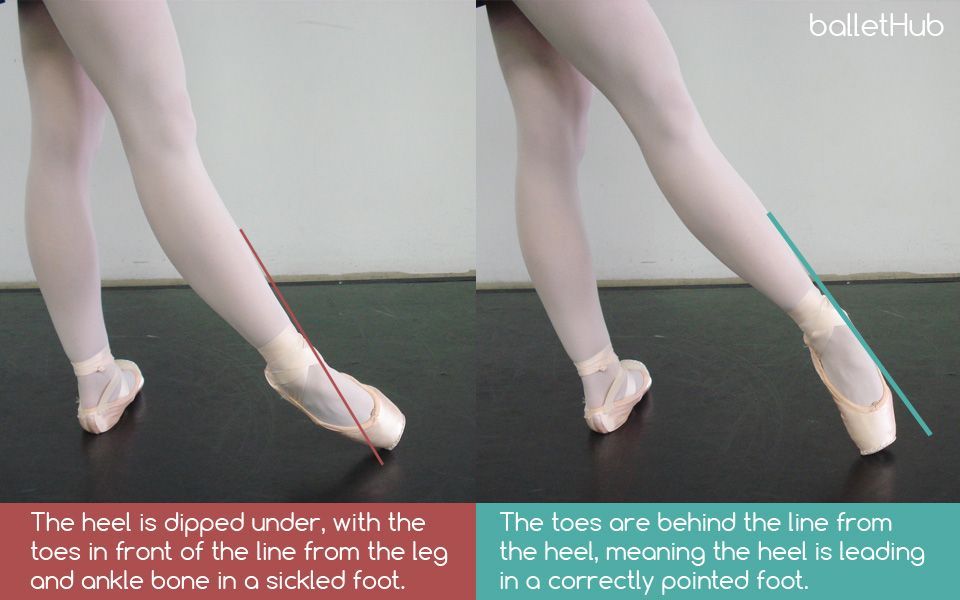
MUSCLES OF THE THIGH
The anterior and posterior thigh muscles are usually more or less trained even just in dance, without any additional effort. Although it is better, of course, to attach them and practice more. And if you often do some sports, then most likely they are already well developed in you.
Typical weaknesses of an ill-trained dancer are the muscles of the inner and outer sides of the thigh. And in vain, they perform important functions.
Adductors of the thigh - a bundle of internal muscles that bring the legs to the center. The tension of these muscles allows us to maintain balance very well, literally grow to a point in the floor. They help with balance even in tilted postures when the pelvis is turned back and it can be difficult to keep the tension in the gluteal muscles. And the legs in such positions continue to hold us, if they are strongly reduced to the center (at the same time, it is not at all necessary that the legs should stand close to each other). The adductors are best pumped with ballet and scissor exercises. At the same time, different internal muscles work in the reversible / non-reversible positions.
The adductors are best pumped with ballet and scissor exercises. At the same time, different internal muscles work in the reversible / non-reversible positions.
It's also very ugly when girls have a non-closing hole between their thighs.
About the outer surface of the thigh I would like to say that if you are not going to permanently raise your legs to the sides (it is not necessary in the soush), then their main purpose is to keep the knee joint in a stable position. What's the matter here? If the thigh muscles are weak, then the knee joint can fall inward (X legs), and over time, from this position, you will have big problems with the knee ligaments. If in the neutral position your legs are straight, not an X, then this is good, but not enough.
I just wrote that the hip adductors help us balance. If two legs stand together, and through effort we press them against each other, then everything is fine, there should be no mistakes here. What if your feet are a little wider? This is the most common position for female partners when performing boneques and other things. Bring them together here, don't bring them together, all the same, 8 out of 10 girls' knees will come together to the center. This happens because the external thigh muscles are turned off, and there is also no habit and understanding. In fact, when we stand with our legs parallel, we need to carefully monitor the position of the knee. If we bring the adductors to the center to better hold ourselves, then the outer group of muscles should remain in good shape and “push” the knees a little to the sides. This is necessary so that the knee remains exactly above the foot and does not fall inward.
What if your feet are a little wider? This is the most common position for female partners when performing boneques and other things. Bring them together here, don't bring them together, all the same, 8 out of 10 girls' knees will come together to the center. This happens because the external thigh muscles are turned off, and there is also no habit and understanding. In fact, when we stand with our legs parallel, we need to carefully monitor the position of the knee. If we bring the adductors to the center to better hold ourselves, then the outer group of muscles should remain in good shape and “push” the knees a little to the sides. This is necessary so that the knee remains exactly above the foot and does not fall inward.
That's what I'm talking about. Not a very bright example, but my own))) Feet at a distance, knees together.
It is very important, when performing any squat (plie) in any position of the legs, to ensure that the knee is clearly above the foot and does not fall either in or out.
SHIN MUSCLES
Shank = caviar, caviar = shank, strengthen the shins = pump calves? No, nifiga) This is a very limited perception.
Caviar needed. Calves help to confidently rise to the half-toes and stand on them for a long time, help to run, jump and land. But you won't get far with them.
Other muscles also influence the position of the foot, the names of which the ordinary dancer does not know and has never heard of. The position of your ankle will depend on the condition of all the muscles of the lower leg, the balance both on the half-toes and on the full foot. And the health of your knees will also depend on the position of your ankle. If the foot is turned inward or outward, or collapses on the outer or inner rib, and the knee is not above the foot (a typical social worker mistake: toes apart - knees forward), the cruciate ligaments of the knee joint will suffer, then pain will appear. By the way, the weakness of the calf muscles is the reason why the feet of the dancers in motion accidentally come into a clubfoot position.
Therefore, it is necessary to additionally strengthen the stabilizing muscles. located in the lower part of the lower leg and affecting the position and stability of the foot. Stretch and shorten the foot, rotate the feet in a circle, roll the feet on the inner and outer ribs, stand on the toes and on the heels (no one allowed me to stand on the heels in class, and by the way, this is quite difficult and includes the front of the lower leg), through resistance to turning the foot in and out. There are many exercises, they are all simple and just require method and perseverance.
A very effective exercise for the muscles from the foot to the thigh is to stand on one leg for a long time, just on a full foot. 5 minutes or more. At the same time, try not to sag on your hip and not substitute your free leg. It also helps a lot to stand on one leg on a balance circle (a round disk that staggers).
Mandatory rule for standing on half toes : the weight must be over the big and forefinger of the foot and in no case should it fall on the little toes.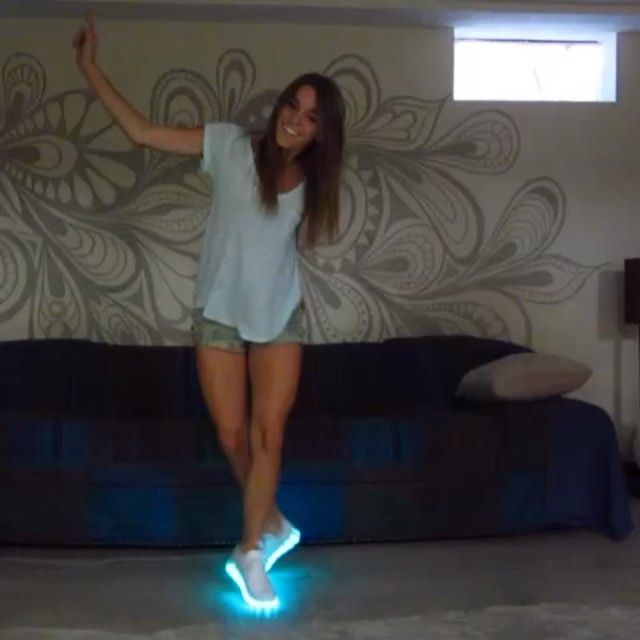 It also depends on the stabilizing muscles of the lower leg.
It also depends on the stabilizing muscles of the lower leg.
FOOT
The structure of the foot is very similar to that of the palm. She can be just as sensitive and mobile. Some professional dancers achieve this. An ordinary person hardly uses the muscles of the foot. Then the brain begins to perceive the muscles of the foot as one whole, the foot becomes like an iron shovel, rigid and inactive.
Due to the lack of development of the feet, the position of the ankle is disturbed, the softness of movements is lost (the knees also suffer from this, yes), other muscles begin to clog, which try to compensate for the weakness of the feet (usually calves, thighs).
Feet are the foundation on which our whole building stands. If something is wrong with the foundation, it will inevitably cause distortions in other parts of the body: in the knees, hips, back, it can even affect the position of the head. And therefore it is important to develop the feet, increase their mobility, strength, plasticity and sensitivity.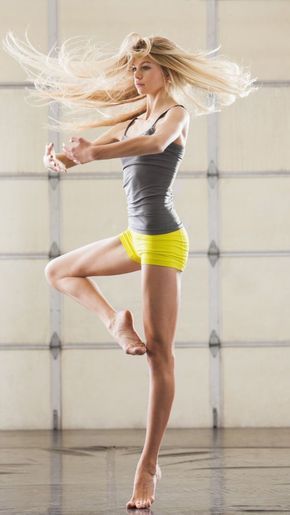
Dancers' feet are often very clogged, especially those dancing in heels. Attempts to maintain balance on poorly trained legs lead to the fact that the dancers try to “grab the floor” with their feet - they overstrain the muscles of the foot, squeeze their fingers. From this foot can reduce. This is especially evident in the training exercises of ballet and jazz-modern: we get so used to straining our feet that where they need to be relaxed, we generally forget to do it, and our feet start to feel pain right in the exercises. On the one hand, this comes from the wrong technique of the foot, on the other hand, from the underdeveloped muscles. Developed feet do not reduce. Well, the reasons may also be the lack of some microelements, etc. In social dance, a vivid example of tightness of the feet is when girls constantly dance on half-toes (in any shoes), practically without lowering their heels, and at the same time on bent knees. Looks ugly. This is how I dance here, it is very clearly visible: https://www.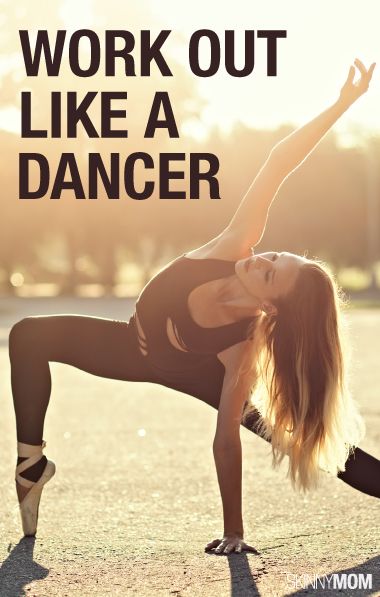 youtube.com/watch?v=lzpFeYB8nHc
youtube.com/watch?v=lzpFeYB8nHc
Foot development exercises are far more than calf raises. It is necessary to move the fingers up, down and to the sides in isolation, lift the napkin with the toes of the foot, stretch the outer and inner surfaces. Foot massage is very useful, and for this purpose I really like a massage ball with spikes (it should be elastic, a wooden massage roller will also work). At first, I roll the ball lightly, until I feel a pleasant tickle and tingle from contact with the skin. This relaxes the tissues of the foot and stimulates blood circulation, relieving chronic tension. When the foot relaxes a little, the sensations are dulled, I start pushing the ball through the foot in different places in order to act on a deeper level. So you can find especially painful areas and suppress them longer. After such a foot massage, the balance becomes better and the legs become softer.
Here is an example of how to wake up dormant foot muscles. I made up my own mind based on what I read.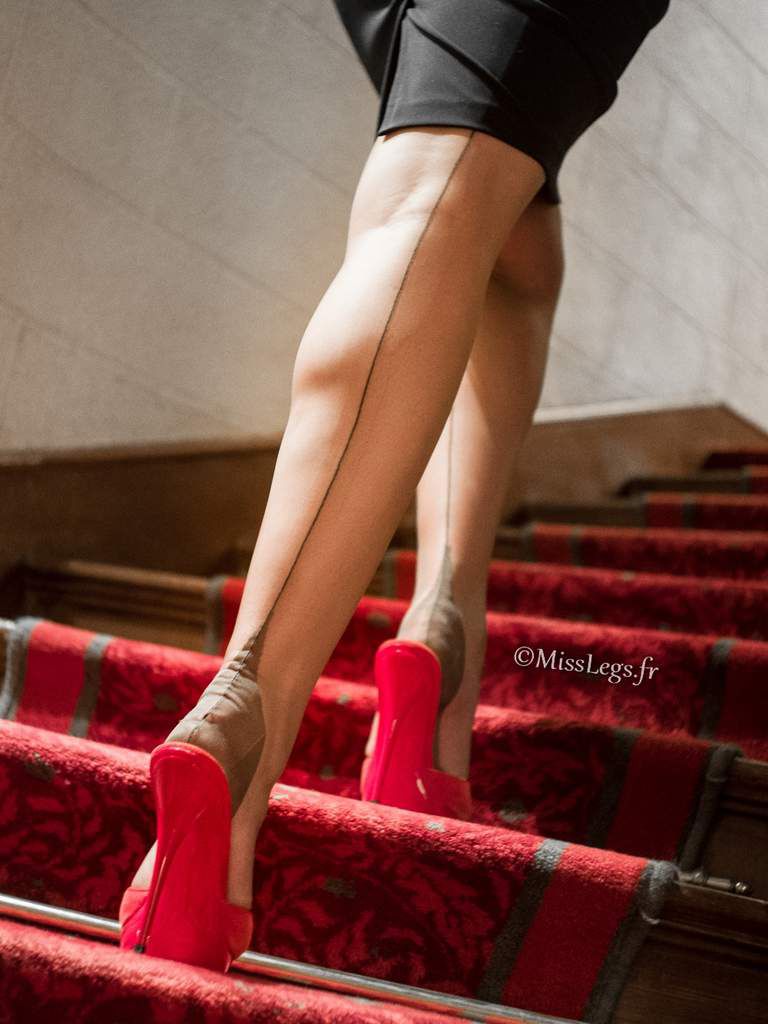 I was not given this in any class. Someone will not succeed at all, someone will feel new sensations in a couple of minutes.
I was not given this in any class. Someone will not succeed at all, someone will feel new sensations in a couple of minutes.
That's all for this article. This is a review article. Train, study your body, ask questions.
On VK you can send me your dance video for analysis, I will make a storyboard with errors and detailed comments, where you have technical errors in the sound, and where there are crookedness and obliqueness associated with the work of your body. I'll tell you what to do, how to work. I can record a detailed video answer with exercises for you. I wrote about it here: https://vk.com/wall599099_11435
I wrote this article for a very long time. I got a lot of different classes, I began to conduct thematic seminars about the work of the body in dance. While I was doing it, a lot of the material was sorted out in my head, and this affected the quality and coherence of this article. I hope that for many of you it turned out to be extremely useful and highlighted some things that you had not thought about before.